Table of Contents
How does climate change affect animals?
Climate change affects animals and birdlife in various different ways. Birds lay their eggs earlier than usual in the year, plants bloom earlier and mammals come out of their hibernation state earlier.
The distribution of animals is also affected. Warming global temperatures force all sorts of animals to migrate closer towards the poles or to higher altitudes. They do this out of desperation, to escape the heat.
While at first, this doesn’t sound too bad. You’ve got to imagine the very serious dilemma migrating animals will face when encountering man made obstacles on their journey to cooler climes. History has proven that animals do not fare well when sharing human occupied space. Modern infrastructure will simply not allow it.
The below map shows the migration routes desperate animals will be forced to take in order to find cooler climates.
If you are interested in viewing the map yourself, you can do so here.
Blue = Birds, Purple = Mammals, Yellow = Amphibians.
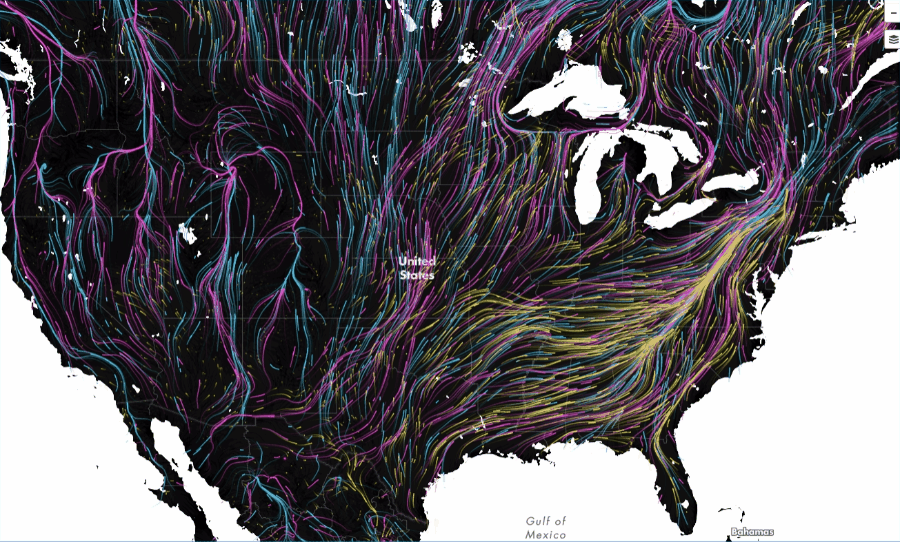
It’s common belief that no species have yet become extinct exclusively due to climate change. However, unless greenhouse gas emissions are drastically reduced now and in the near future, climate change is predicted to cause a mass extinction of over a quarter of all land animals, birdlife and plants by 2050.
Animals affected by climate change
We’ve created this list on how climate change affects certain animal species we know and love today.
Gorilla
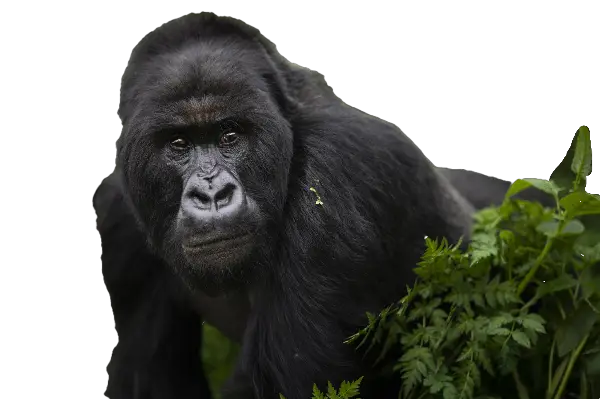
Climate change has the potential to affect so much of the gorillas’ environment.
Slight changes in rainfall patterns or temperatures will affect the gorillas’ food supply. Thus, causing thermal stress and increasing the likelihood of habitat loss due to raging forest fires.
Human populations living near the gorillas are also likely to be affected by climate change. Which in turn will put more pressure on the gorillas themselves.
For example, extreme weather events such as drought can cause food and water supplies to diminish. Local human populations will then be forced to exploit the surrounding forests in order to replenish their loss.
(IUCN red list status: Critically Endangered – There are only 880 mountain gorillas left in the wild.)
Cheetah
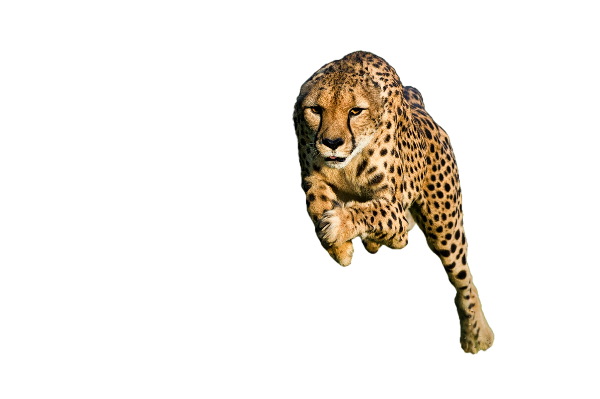
The steady rise in global temperatures has begun to affect this majestic cat’s ability to reproduce.
The male cheetahs’ testosterone levels and sperm count is a whopping ten times lower than your average house cat.
To make matters worse, the female cheetah’s own reproductive cycle does not help the male out much. Female cheetahs only give birth once about every 18 months, with high cub mortality rates.
You can help to conserve this big cat as part of GVI’s cheetah conservation and research project in South Africa.
(IUCN red list status: Vulnerable – Today there are just 7100 cheetahs left in the wild.)
Great White Shark
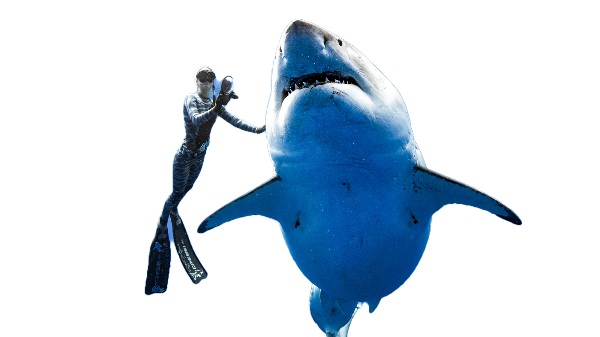
Climate change means more than just hotter weather. For the ocean, it means less oxygen production, which in turn means more acidic water.
For great white sharks and other marine creatures, this is a problem.
Sharks react to acidic oceans in strange ways, they struggle to home in on their prey when the chemical balance of their water is affected.
Loss of oxygen adds yet another hurdle for great white sharks.
In general, big-bodied migratory sharks are thought to be somewhat safer from climate change. As they can follow their prey around or escape to more comfortable climatic conditions.
However, big active animals also require more oxygen in order to function optimally. Great white sharks could literally start to suffocate as the oceans heat up.
(IUCN red list status: Endangered – There are currently 3500 great white sharks left.)
Giant Panda Bear
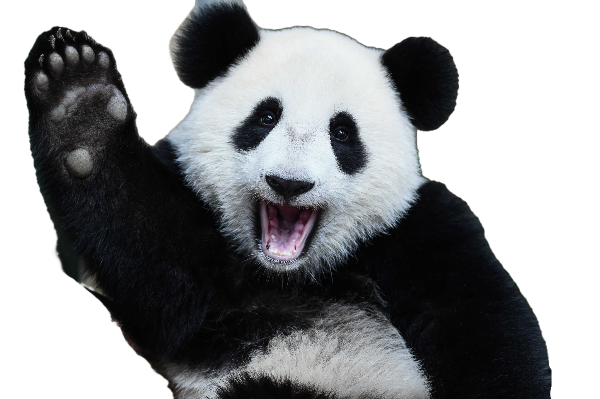
Pandas feed predominantly on bamboo, in fact it makes up 90% of their entire diet.
Bamboo has an unusual reproductive cycle, limiting its capabilities at adapting to climate change. (One species studied only flowers and reproduces every 30-35 years.)
When bamboo supplies die off, pandas will be forced to relocate to higher elevations or latitudes in search for food. Inevitably, coming face to face with human settlements more frequently.
Priorities for climate-informed giant panda conservation should include the restoration of habitat with bamboo genotypes better suited for warmer climates.
(IUCN red list status: Vulnerable – There are just 1864 pandas left in the wild.)
Green Turtle
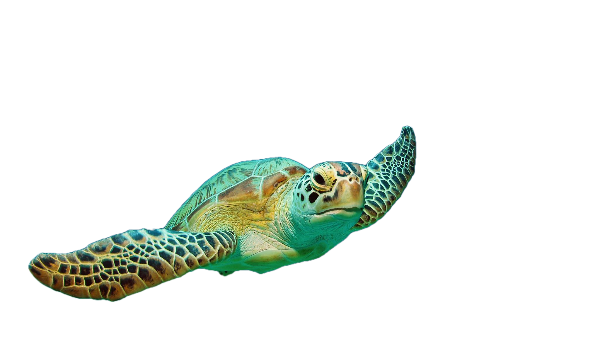
Green turtles, like so many other animal species, are incredibly sensitive to climatic shifts in temperature.
Interestingly, an infant turtle’s sex actually depends on the temperature of the sand in which the eggs are laid.
Sand temperatures above 84,38°F (29.1°C) produce female turtles, cooler sand produce male turtles.
A warmer climate means more female green turtles are being born, which is essentially disrupting the natural gender ratio. (Research has brought to light that the northern Great Barrier Reef’s green sea turtle offspring are born almost completely female, with males outnumbered by at least 116 to 1.)
If this gender ratio inequality continues, the population growth of the green turtle species will be affected. Since less mating partners are not conducive to an optimal reproduction balance.
You can support the protection of this endangered species by joining GVI’s endangered turtle conservation and research program in Thailand.
(IUCN red list status: Endangered – Between 85,000 to 90,000 nesting females remain in the wild.)
Asian Elephant
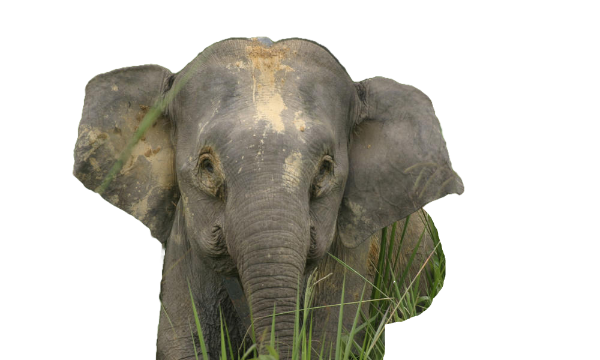
Asian elephants have an extraordinary wide range of diet which is beneficial for any animal trying to adapt to climatic changes.
What make these elephants more vulnerable towards climate change is their extreme sensitivity towards high temperatures and their even more extreme need for huge amounts of water.
Asian elephants need to consume at least 225 liters of water per day.
In fact, their daily activities, reproduction, and migration are all tied to water. Droughts threaten this particular animal species more than most.
Furthermore, these elephants can live anywhere between 20 and 25 years, making it harder for the species to adapt to incremental changes in climate.
(IUCN red list status: Endangered – There are around 40,000-50,000 elephants left in Asia.)
Wandering Albatross
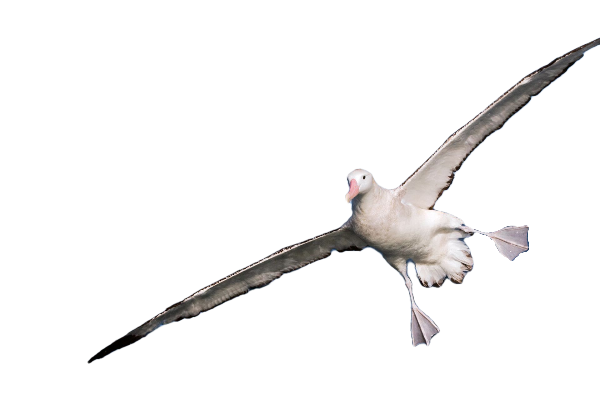
The wandering albatross is one of the more impressive bird species. Their wingspan is the longest of any bird on earth, ranging from 2.51 to 3.5 m. And they live up to 60 years.
This great bird actually spends the majority of its life in flight. It is capable of flying 10 000 miles (16 093km) in a single nonstop journey.
The effect of climate change is such that the population growth rate of the species will decline by 5.3% per year.
Warmer ocean temperatures usually result in less primary productivity in marine ecosystems. Essentially, this means less prey for wandering albatross.
Sadly, as our oceans heat up, fewer juvenile albatross will manage to survive.
(IUCN red list status: Vulnerable – There are approximately 25 200 wandering albatross left in the wild.)
Moose
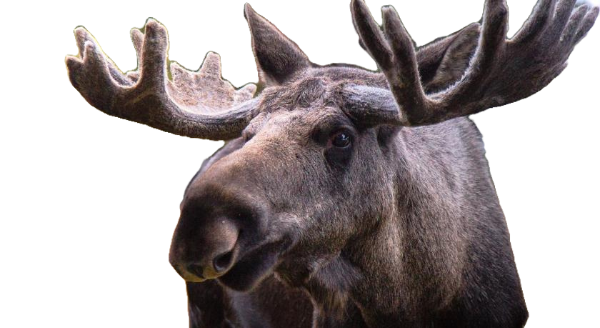
Moose are admirably adapted to cold weather, but poorly suited to warmer climates.
Their highly insulative coat, thick skin and low surface to volume ratio make it difficult for a moose to stay cool.
Temperatures in summer exceeding 57 °F (14°C) and winter temperatures above 23°F (-5°C) cause moose to begin heat stressing.
If heat stress occurs, their respiration and heart rate elevate. They are forced to relocate to cooler shaded areas. Foraging ultimately ceases.
If moose do not gain enough weight by foraging in the summer, they may not have enough body fat to sustain themselves through winter.
( IUCN red list status: Least concern – There are an estimated 500 000 to 1 000 000 moose left in the wild.)
Polar Bear
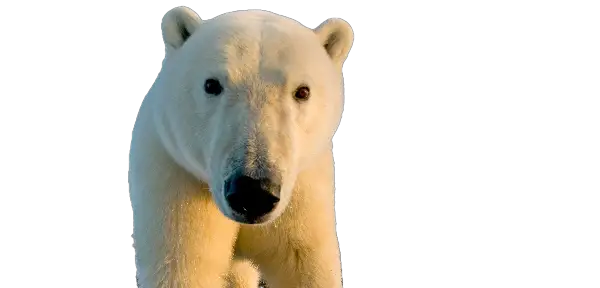
If temperatures continue to rise, polar bears have a bleak future ahead, say scientists.
Polar bears’ primary habitat is sea ice. They use this ice as a platform to hunt seals.
The single biggest threat to polar bear numbers is the loss of sea ice, according to the latest and most comprehensive review to date.
Prof Andrew Derocher, expert in polar bear ecology and conservation, says the following:
“Without sea ice, there is no sea ice ecosystem and losing that ecosystem includes losing polar bears”.
Essentially, without sea ice, polar bears may starve to death.
Climate change impacts the bears in other ways. too. Warming temperatures can cause their dens to collapse as the snow melts, potentially killing any young cubs whom are fast asleep inside.
(IUCN Red list status: Vulnerable – There are 31 000 polar bears left in the wild.)
Greenland Sled Dogs
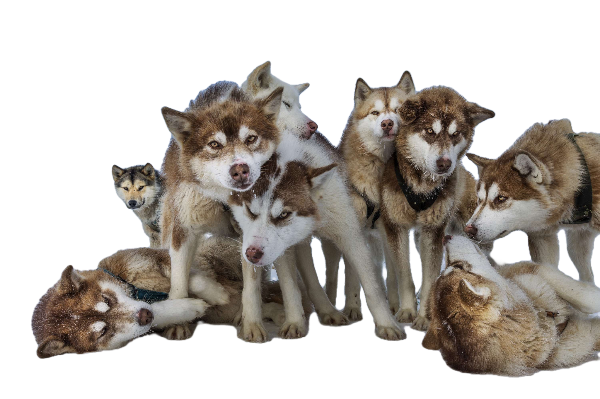
Greenland is at risk of losing its sled dog culture. The number of dogs has decreased by 50% over the last 20 years.
One reason for this decline in numbers is global warming heating up the atmosphere and ocean currents that flow around Greenland’s coast.
Sea ice is melting and along with it the necessity for sled dogs. In order to continue their hunting without sea ice, local people need to use boats to keep afloat instead of sled dogs to pull them along.
There are approximately 15 000 Greenland sled dogs left.
Honey Bee
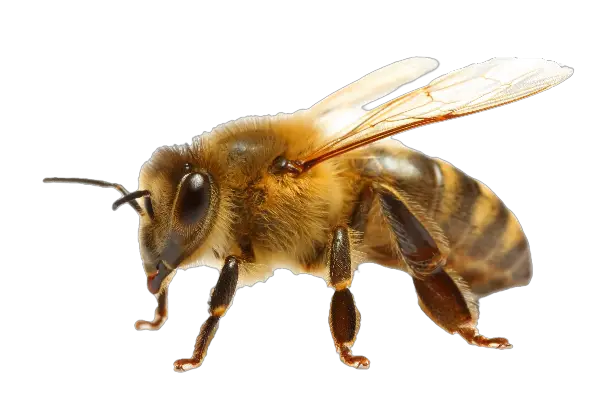
In the most recent meeting of the Royal Geographical Society of London, the Earthwatch institute declared bees as the most important species living on our planet.
Quite a statement when there are over 8 million species living on earth.
Three out of four crops across the globe, which produce fruits and seeds for human consumption, depend on pollinators. Honeybees are the most important pollinator in the world.
To give you some perspective, the total value of global crops pollinated by honeybees was estimated at nearly $200 billion in 2005.
Today honeybees face a serious threat. Climate change may cause what’s known as “colony collapse disorder (CCD)”. CCD is a phenomenon where the majority of worker bees abandon their hive, leaving the queen, plenty of food and nurse bees to fend for themselves behind.
Heat waves and droughts affect the evolution of the population of bees and the storage reserves of honey and pollen. This increases the food stress for bees.
Bees and other pollinators are declining in numbers around the world, with recent figures suggesting as much as 30% per year.
One third of our global food supply is pollinated by bees, so if bees continue to decline in numbers, the cost of fruit and vegetables could significantly increase. Nutritious crops will gradually be replaced by staple crops like corn, rice, and potatoes, resulting in an imbalanced diet.
What is Climate Change?
Simply put, climate change is defined by long-term changes to the global climate which result in unusual and extreme weather patterns.
The earth’s energy budget
The climate system receives almost all its energy from that massive blinding light high up in the sky, the sun. To add some equilibrium to this affect the climate system also radiates energy back to outer space.
The balance between the incoming and outgoing energy that flows through the climate system determines the earth’s energy budget.
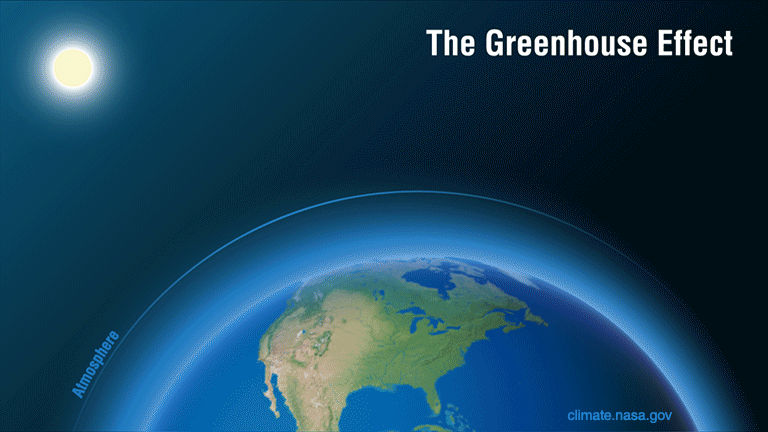
When more energy flows in than goes out, earth’s energy budget is in a positive and the climate system slowly starts to heat up. When the opposite happens, the earth’s energy budget is in a negative and the climate system starts to cool down.
Currently the earth’s energy system is in a positive.
We are heating up…
Why is the earth heating up?
Greenhouse gases such as CO2, methane and nitrous oxide, are warming the climate system by trapping infrared light. This is one form of the sun’s energy that’s not able to escape back into outer space.
Earth itself creates ‘natural’ forms of greenhouse gases, for example when volcanoes erupt. However, scientists classify this as external climate forcing.
The problem today is internal climate forcing.
Since the industrial revolution humanity has been adding to the earth’s greenhouse gases by emitting large quantities of CO2 in the form of fossil fuel combustion and animal husbandry.
Examine the 2 graphs below. The graph on the left depicts how the global temperature has risen over the years. The graph on the right depicts how the CO2 levels have risen since the industrial revolution.
The industrial revolution began in the year 1760, read more about it here.
What extreme weather conditions will climate change cause?
As our earth warms, many other factors affecting the climate will be triggered. Extreme heat is the most likely factor to affect animals and humans alike.
View this interactive map to see what extreme weather conditions have occured around the world due to climate change.
Heat waves
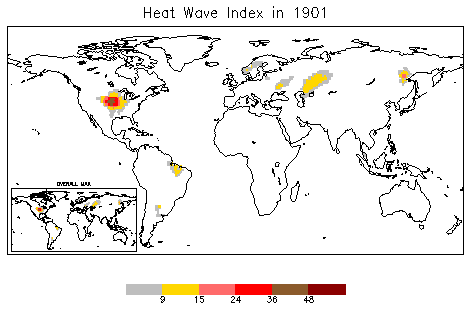
These are long periods of extreme heat (usually accompanied by high humidity), sometimes lasting days to several weeks. Deadly heat waves have caused catastrophic crop failures, hellbound wildfires, thousands of deaths from hyperthermia (not to be confused with hypothermia), and widespread power outages. Believe it or not, this can be caused by the massive increase in air conditioner use. A country familiar with this is Australia.
Drought

Prolonged periods of heat lead to higher levels of evaporation, sometimes resulting in water shortages. A drought can last for months on end and sometimes even years.
A famous recent example that made world news, was the Cape Town water crisis also known as Day Zero. Day Zero was a shorthand reference for when the cities major dam levels fell below 13.5% capacity.
If this limit was reached it would herald the start of level 7 water restrictions. This would effectively mean that municipal water supplies would largely be switched off. Cape Town residents would see themselves queuing for their daily ration of water. Thankfully, day zero never arrived.
Heavy downpours and flooding
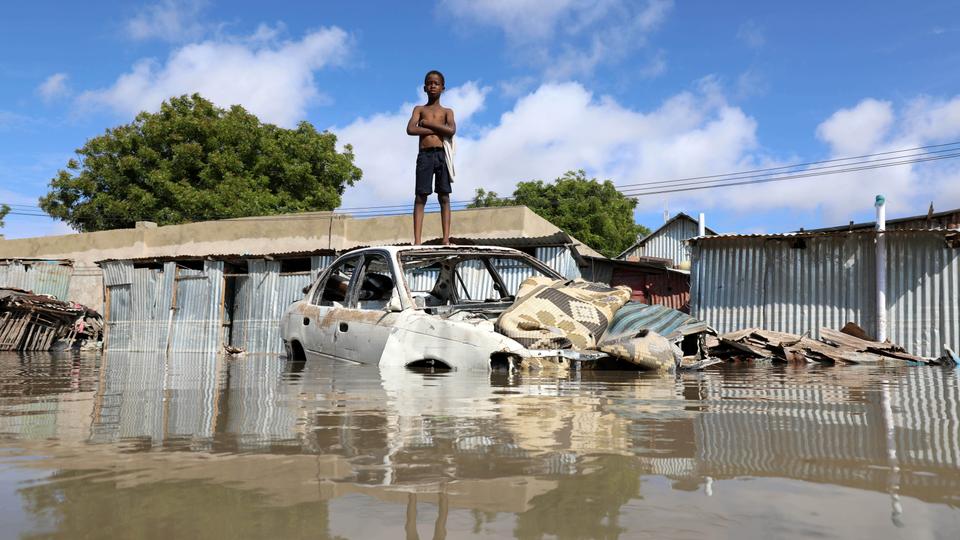
Flooding is the world’s leading natural disaster. It causes countless environmental challenges for nations around the globe. Challenges such as landslides, damage to crops, collapse of buildings and bridges and the wrecking of homes.
Flooding alters the balance of the environment and often creates a prime breeding ground for nasty waterborne diseases like typhoid fever, cholera, leptospirosis and hepatitis A.
It comes as no surprise then that heavy downpours have increased in frequency over the past 50 years, in line with atmospheric shifts in our climate.
Tropical cyclones
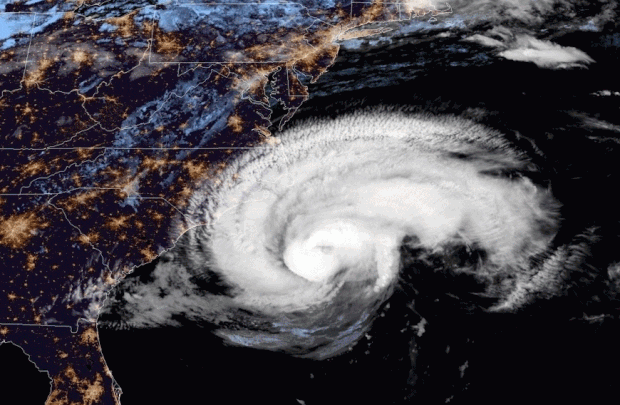
Tropical cyclones can reach devastating speeds. The strongest cyclone ever recorded was hurricane Allen, with wind speeds reaching upto 305km/h. These storms have various different names around the world. Such as hurricane (United States), typhoon (Japan and China), willy willy (Australia) etc.
Tropical cyclones are measured by the Saffir–Simpson scale.
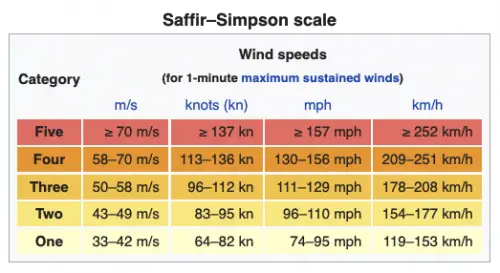
Scientists collectively agree that greenhouse warming will have a direct effect on the global average intensity of tropical cyclones. They are predicting a shift towards stronger storms, with intensity increasing by 2 to 11% by 2100.
What can you do to prevent climate change?
Find out how to reduce your carbon footprint here.

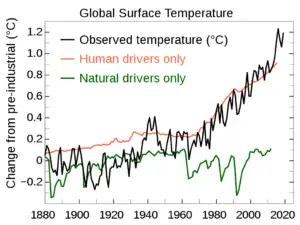
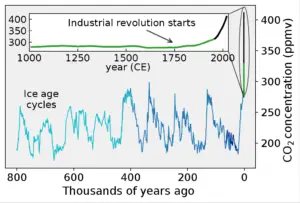
23 Examples of Keystone Species Living on our Planet
Monday 25th of May 2020
[…] tusks to dig for water. This not only allows them to survive in extremely arid conditions or when droughts strike, but it also provides life-sustaining water for other […]
The Rarest Animals in The World - IUCN Certified*
Monday 18th of May 2020
[…] Poaching, habitat loss and climate change all contribute to the desecration of our world’s most precious animals. […]